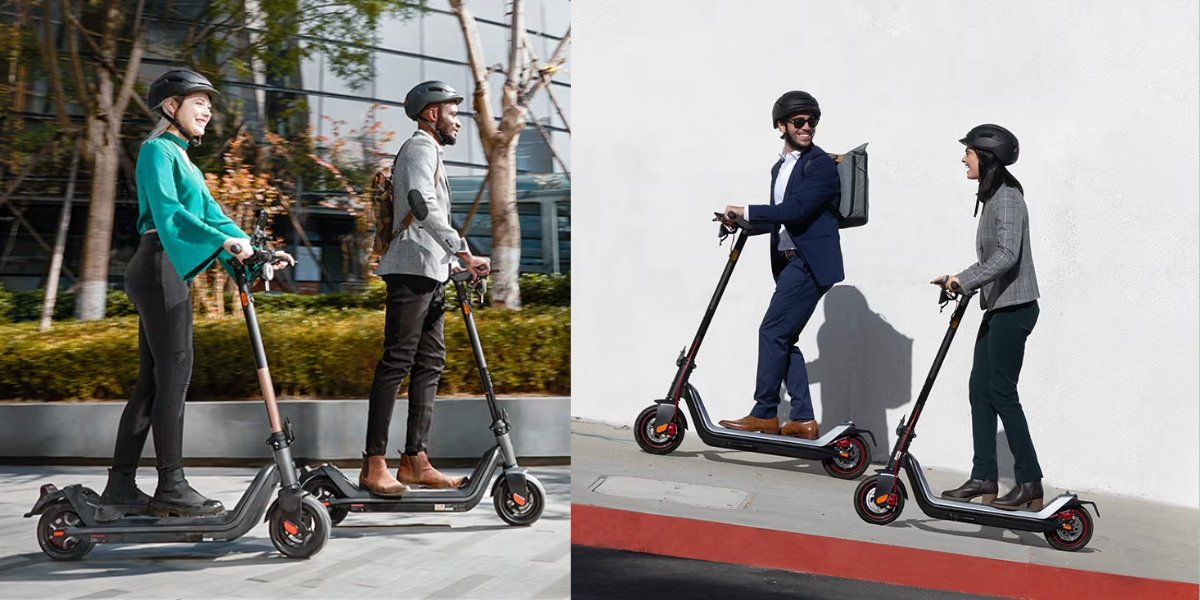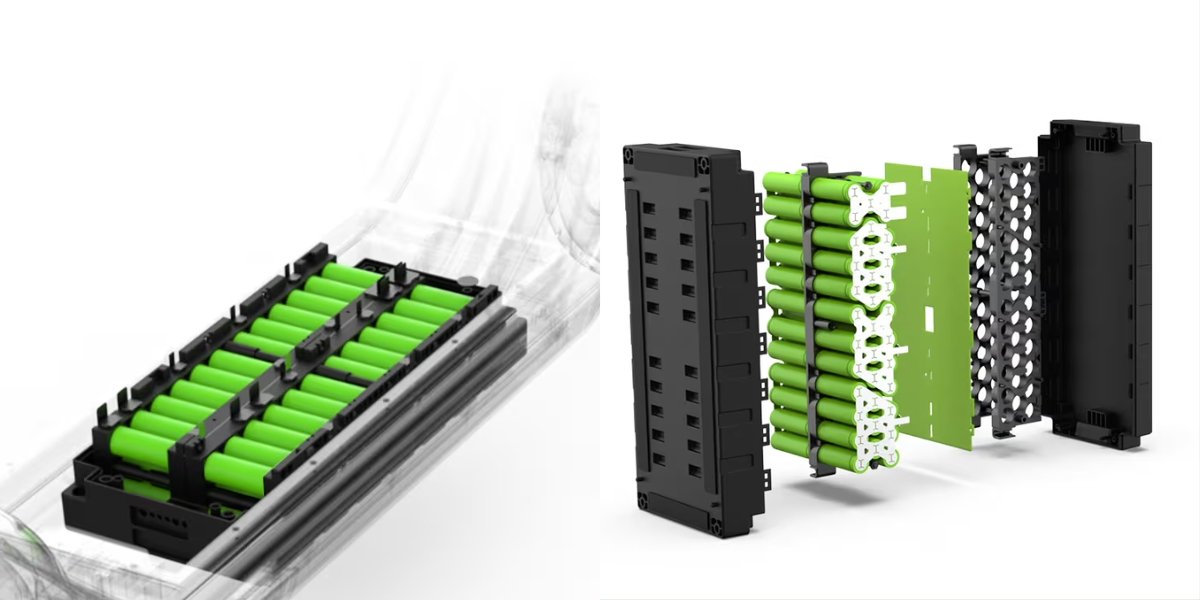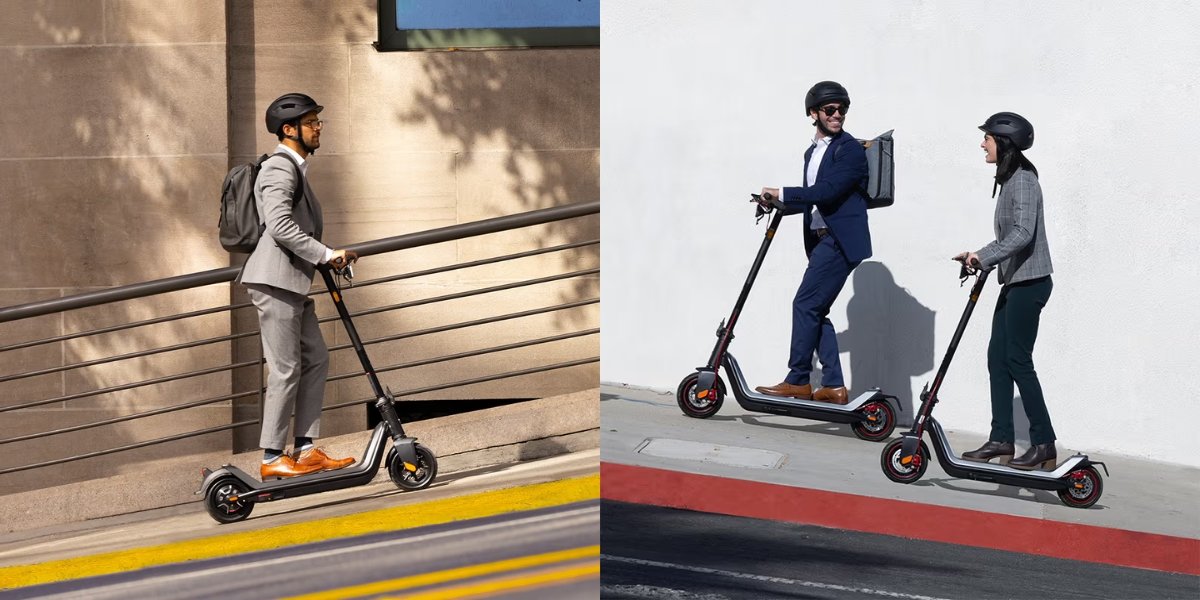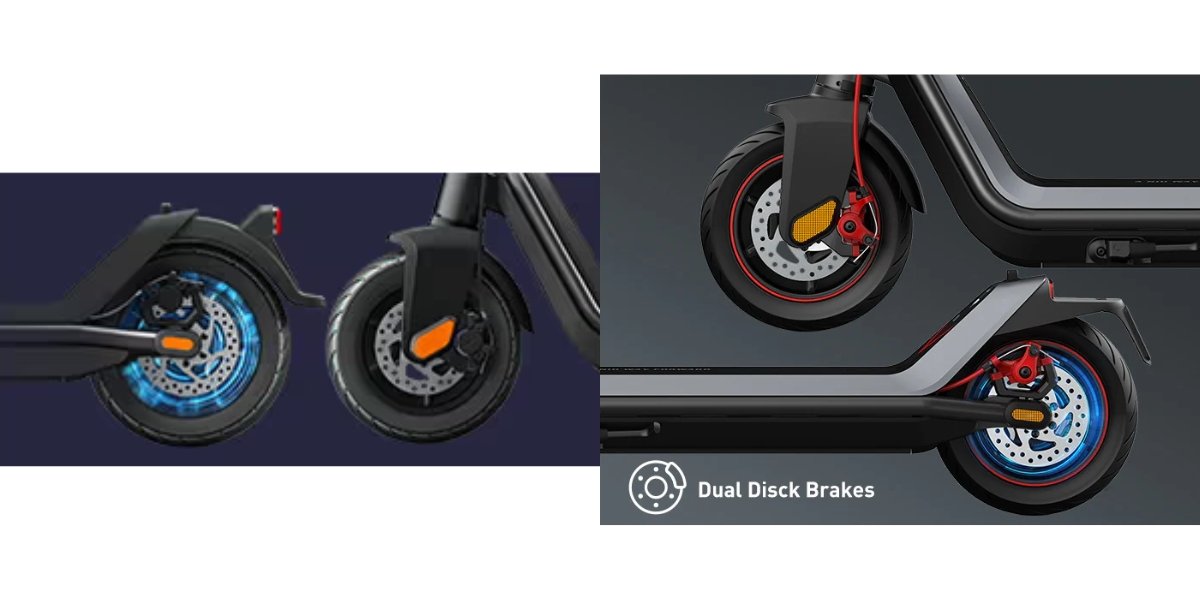Micromobility is here to stay, and it’s changing how we experience urban life for the better. With Unagi’s membership program, you can enjoy all the benefits of a top-tier electric scooter without the sky-high price of ownership or the inconvenience of ride-sharing.
Founded in 2014, NIU has gained immense popularity in the past decade and has become known for their high-quality yet affordable mopeds and scooters. The NIU KQi3 Pro and NIU KQi3 Max are two of their most-loved offerings, but which one is the better option?
At first glance, the NIU KQi3 Pro and the NIU KQi3 Max look nearly identical. With their chunky tires, timeless design, halo lights, and wide decks, it’s easy to mistake one for the other. While these two electric scooters certainly have plenty of similarities, they also have a few key differences that set them apart.
Let’s compare a few of the most important features to determine which of these electric scooters is the right fit for you. From the cost to the battery power and everything in between, we’ll find out which scooter comes out on top!
NIU KQi3 Pro Vs NIU KQi3 Max Comparison Table
| Scooter Specs | NIU KQi3 Max | NIU KQi3 Pro |
|---|---|---|
| Cost | $599 | $499 |
| Motor | 450 W | 350 W |
| Battery | 608 Wh | 486 Wh |
| Top Speed | 23.6 mph | 20 mph |
| Range | 40.4 miles | 31 miles |
| Brakes | Regenerative brakes | Regenerative brakes |
| Scooter Weight | 46.7 lbs | 44.8 lbs |
| Max Rider Weight | 265 lbs | 265 lbs |
| Construction Materials | Aluminum | Aluminum |
| Tires | Self-Healing | Pneumatic |
| Lights | Front and rear lights | Front and rear lights |
| Battery Charge Time | 8 hours | 6 hours |
| Water Resistance | IP54 | IP54 |
| Climbing Angle | 25 degrees | 20 degrees |
| Suspension | N/A | N/A |
Cost
Depending on where you purchase your NIU scooter, the Max typically costs at least $100 more than the Pro. This additional cost is very much in line with the improved features offered by the Max, and it seems to be a fair deal.
At the end of the day, it all comes down to your budget. If you feel as though the improved features are worth an extra 100 bucks, then you should definitely go for the Max, even if you have to save for a little longer to do so.
Both scooters also regularly go on sale, so be sure to keep an eye out for discounts.
It's always best to buy your electric scooter directly from the manufacturer so you can benefit from all the warranties and communicate directly with support staff should you encounter any issues.
Performance
When it comes to performance, the main difference between the NIU KQi3 Pro and the NIU KQi3 Max is the motor power. The Pro has a motor power of 350 W, while the Max’s is 450 W. This extra 100 W of power can make all the difference, especially when traveling longer distances or climbing hills.
The difference in motor power is one of the only significant distinctions in the performance of these two electric scooters. Many of the other performance features are very similar or identical, such as their rider weight capacity.

Speed and Acceleration
The NIU KQi3 Pro’s top speed sits at approximately 20 mph. The NIU KQi3 Max beats it by just over 3 mph with a top speed of 23.6 mph. While the difference is slight, the extra speed can come in handy when you are commuting and running a little late for work.
However, keep in mind the Max’s top speed is limited to 20mph, which aligns with traffic regulations, and you can only unlock the top speed when you’re riding on private property.
Both electric scooters make use of a thumb throttle and can get from zero to 15 miles per hour in roughly five seconds.
Range and Battery
Both the NIU KQi3 Pro and the NIU KQi3 Max are ideal for commuting as they offer a range of 31 and 40.4 miles, respectively. It’s clear that the Max has a little edge over the Pro when it comes to range, and the same is true for the size of the battery - the Max’s battery is 608 Wh while the Pro’s is 486 Wh.
The batteries used in the NIU KQi3 range are designed to carry the rider for many miles along their journey, with some of the battery features including:
- Breakwire protection
- Overcharge protection
- Pre-discharge control
- Balance function
- High-temperature protection
- Low-temperature protection
- Charging overcurrent protection
So, what about charging time? The Max takes eight hours to charge, while the Pro takes six hours. This two-hour difference is not too significant, especially if you charge your scooter overnight. Both have an easy-to-read battery-level indicator, so be sure to keep an eye on it.
When it comes to the battery life, you can expect NIU scooter batteries to last you roughly four years or 500 charge cycles.

Hill Climbing
The wider the climbing angle, the steeper the slopes a particular scooter can handle. Both scooters have pretty impressive climbing angles, with the NIU KQi3 Pro offering an angle of 20 degrees and the NIU KQi3 Max offering an angle of 25 degrees. The Max gets its increased climbing abilities thanks to its more powerful motor.
If you live in a city with loads of hills, the 5% difference can be incredibly helpful. Obviously, this isn't as important if you live in a relatively flat area.

Learn about How to Ride an Electric Scooter Uphill?
Braking
Braking is one of the most important aspects of scooter safety. If you don’t have reliable brakes, you could easily end up with an injury.
Both NIU scooters in this comparison have front and back disc brakes, as well as a back electronic brake - perfect for your safety and convenience. Both model's systems come with braking lights to show pedestrians and vehicles when you are slowing down.
The die-cast aluminum alloy braking system allows for short braking distances, letting you deal with unexpected challenges and obstacles as they arise. Another impressive feature is the regenerative braking system, thanks to the electronic back brake, which actually helps charge up your battery instead of drawing from it.

Build Quality
At just a glance, you’re able to tell that both the NIU KQi3 Pro and the NIU KQi3 Max have been made to last. Their robust design and quality materials ensure a reliable ride.
Aesthetics
The aesthetics and design of these two NIU scooters are almost identical. They look modern and ergonomic yet robust and will blend in perfectly with any urban landscape.
The NIU KQi3 Pro comes in both black and rose gold, while the NIU KQi3 Max comes in space grey. Both options offer a classic look that ensures these scooters will remain stylish for decades to come.
Materials and Durability
The main material used in the construction of NIU scooters is aluminum, which gives them their lightweight appeal. The batteries are made from lithium-ion and the tires are rubber.
When it comes down to it, both scooters are highly durable and have an expected lifespan of 10+ years. If you were to split hairs, the NIU KQi3 Max would come out on top due to its self-healing tires and lighter frame.
Ride Quality
NIU’s KQi3 models are often referred to as the ‘SUV of scooters’, offering an exceptionally comfortable ride, even when you're navigating uneven surfaces.
Tires
With 30% fatter wheels than other adult kick scooters, both the KQi3 Max and Pro truly stand out from the crowd. These chunkier tires offer better shock absorption and an all-around more comfortable ride.
While both 9.5-inch wheels are made from rubber, the Pro’s tires are pneumatic while the Max’s are ‘self-healing’, meaning they will seal automatically when punctured. This removes the worry of dealing with a flat tire en route.
Suspension
Neither of these electric scooters has suspension, which can seem like a drawback at first. However, you need to consider the fact that very few electric scooters in the same price range offer suspension, so it is actually very normal.
Despite the lack of suspension, the large tires on both scooters offer excellent shock absorption, so you can ride on bumpy surfaces with ease.
Deck Space
Both the NIU KQi3 Pro and the NIU KQi3 Max have impressively wide decks with the same dimensions (6.7"W × 22.4"L), making for a comfortable travel experience. Compared with other adult kick electric scooters, the NIU KQi3 Pro and the NIU KQi3 Max have a 13% wider deck.
The wide deck provides extra stability and is a preferred choice for those with larger feet, those who prefer a wider stance, and those wanting to place a basket or a backpack on the deck.

Portability
The NIU KQi3 Pro and the NIU KQi3 Max have a patented folding mechanism that allows the user to fold the scooter in one simple motion.
Both scooters are relatively light, with the NIU KQi3 Max weighing roughly 46 lbs and the NIU KQi3 weighing 49 lbs. This makes them easy to carry once you have reached your destination, whether it be your apartment building or your place of work.
You can easily store your scooter in the boot of your car, under your desk at work, or in your garage. Once folded, both NIU scooters take up very little space.
Weather Resistance
With a water resistance rating of IP54, both scooters are suitable for riding in light rain. They are also resistant to things like dust and shallow puddles. However, you should avoid riding these scooters in heavy downpours and through deeper puddles as you could damage certain elements.
Remember to check the weather before you head out on your NIU KQi3 scooter. The good news is that thanks to its impressive portability, you can always take it with you on a bus or in a taxi, just in case the weather clears up later on.
Apps
Both scooters allow you to connect to NIU’s innovative app (compatible with Android and iOS devices), which lets you track things like your battery level and riding statistics. You can even lock your scooter using the app!
The LED display panel lets you connect your phone via a Bluetooth connection system so you can easily pull up directions or listen to music.
This technological enhancement truly sets both scooters apart from others on the market. The app makes it so much easier to manage your scooter activity, enjoy cruise control, and improve your overall riding experience.
Lights
If you want to ride your scooter around at night or on dark, cloudy days, then lights are absolutely essential as they alert vehicles and pedestrians to your presence. Fortunately, the NIU KQi3 Pro and the NIU KQi3 Max offer both front and rear lights.
The ‘halo’ section of the light stays on at all times, while the center part of the light can be turned off and on. The bright LED lighting ensures your visibility on the road no matter the time of day or night.
The lights do not require much power, which means they won’t drain your battery if you ride with them on. While some NIU scooters have indicators, the KQi3 Max and the KQi3 Pro unfortunately do not.

Verdict
So, what’s the verdict? While these two electric scooters are similar in many ways, the NIU KQi3 Max certainly comes out on top thanks to its increased motor power, higher top speed, higher climbing angle, and larger battery.
The only real advantage that the NIU KQi3 Pro has over the Max is the fact that the battery takes less time to charge and it’s cheaper. So, the Pro could be a good choice if you are looking to purchase your first electric scooter.
Unless you are a scooter expert, you probably wouldn’t even notice the differences between these two scooters, as NIU has really done a fantastic job with the design and the performance. However, if you value that extra bit of speed and power in a scooter, then you cannot go wrong with the NIU KQi3 Max.

Stay current with the latest U.S. electric scooter laws in our 2025 guide. Updated annually since our first comprehensive guide, ensuring you have the most recent state and city regulations to ride responsibly”

The Slack Core 920R is currently the fastest electric scooter in 2025 that you can purchase without the need for pre-order.

Our selection of the best electric scooters 2025 spans the fastest e-scooters to the most portable ones, the ones designed for city riding and off-road, the best scooters for rain, budget electric scooters for students, and more powerful ones for skilled riders.

The Unagi Voyager is the best lightweight electric scooter for adults and teenagers. It is the ultraportable sequel to its predecessor, the Unagi Model One Classic.

If you're wondering whether an electric scooter with a seat is right for you, this is a detailed article that would suit your need.

Understand which personal electric vehicle is best, the choice between an electric bike or electric scooter might already be made for you by some critical factors, including portability and storage capacity.

In the U.S., most states don't require a license. For those that do, they usually just ask for a regular driver's license or a learner's permit.

Yes, you can bring an electric scooter on a plane, but it needs to have a lithium battery smaller than 100 watt-hours, which most don't.

Manufacturers advise against riding electric scooters in the rain. The main reasons are: water can fry the electronics, make the ride dangerous, and void your warranty.

The basis and the premise of my work is that we either operate out of love or we operate out of fear...Time is currency. The coolest thing about the scooters is that it's really quick, and it goes uphill. From there, traveling more efficiently and having a good time doing it--I think that's the most important thing.

Cynthia Leu has a full plate. A tech worker by day, Cynthia spends her off time balancing the parallel lives of a powerlifter, entrepreneur, mental health advocate, and more. Riding Unagi helps this USMC veteran cut down on everyday…

https://www.youtube.com/watch?v=7m2hVBE62LY Rasheed Muhammad is sick of Los Angeles traffic. In order to preserve his sanity, Rasheed has traded his everyday driving habit for the portable and beautiful Unagi Model One. It’s an essential accessory for navigating LA streets -- and…

Rich Lee, Co-Founder of San Francisco’s SPRO Coffee Lab, wants to share his love for coffee with the world. He depends on riding Unagi to avoid the hassle of navigating the parking crunch in the booming Mission Bay neighborhood.…












